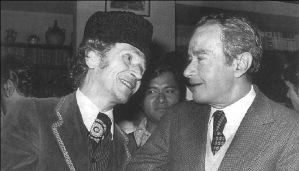RULFO = ARREOLA
Tanya Huntington
Last week during a radio interview, the eminent literary critic Christopher Domínguez Michael postulated that if the present globalizing trend continues, within fifteen years or so we may not even find ourselves inclined to discuss such a thing as “Mexican literature”. Which gave me pause for thought, and not only because I happen to be teaching a seminar titled Mexican Literature II. Rather, a similarly drastic reflection had me wondering of late whether art should even bother to carry a passport anymore. After all, artists, including authors, do not seek influences solely within nationalist boundaries; they venture outside their native territories (and tongues and centuries as well) to find them. As anyone who has ever attempted philology is well aware, whenever you frame literary traditions as genealogies, a lot can get lost in the classification.
Indeed, one of the by-products of establishing a literary canon is the rather painful reminder of our sustained belief in a geographic determinism of sorts: to this day, we study literatures by positioning ourselves at junctions formed not only by languages and eras, but political boundaries as well. Therefore, if we are to lend credence to those sociologists who continue to privilege such circumstances over freewill, then two mid-20th century authors born in the same state only a year apart under the same first name who, moreover, were close personal friends should have a lot in common, literarily speaking. Especially if one of them were responsible for editing and publishing the other’s classic novel.
And yet, the literary works written by Juan Rulfo and Juan José Arreola seem different as apples and oranges to us.
Let’s go down the checklist: Rulfo is a universal author revered by the likes of Günter Grass – no small feat, given the fact that his complete works fit into a single, rather slim volume – whereas Arreola is considered to have been more of a local celebrity. Rulfo is Mexican to the marrow in his themes and treatments and his ambiences are not only rural, but stifling. Much of Arreola’s prose, in contrast, could be seamlessly rebranded by other cultures: he tends to prefer urban, open-ended scenarios. Even “El guardagujas”, with its train station in the middle of nowhere, could be located basically anywhere. Many of his characters remain anonymous, whereas Rulfo baptizes his with names that are ominously significant (one need look no further than the onomastic implications of “Pedro”, or stone, and “Páramo”, or wasteland). Rulfo decries deeply rooted, atavistic traditions and Arreola, superficial bourgeois decorum. While both represent what we might call the dark side of human experience, they wear different masks: Rulfo inevitably dons the grimace of tragedy and Arreola, the grin of comedy.
And yet, to my surprise, these authors do have something in common besides the aforementioned biographical considerations. It dawned on me in the classroom – as we rather spontaneously contrasted Pedro Páramo with “Una reputación”, a short story found in Arreola’s first collection, Confabulario – that both narratives describe an extreme, archetypal division of masculine and feminine worlds.
I dedicated my Bachelor’s thesis many years ago to this particular division in Pedro Páramo, which I viewed in terms of concentric circles, given the infernal connotations of Comala, so reminiscent of the red-hot comal tortillas are warmed on —moreover, it was still fashionable at the time to include in one’s academic essays diagrams that, at first glance, seemed more pertinent to the field of basic geometry than to literature. I found that within the strange limbo constructed by Rulfo, all of the female characters (minus one) are fully aware that they are dead, whereas all of the male characters (minus one) are stuck in their own streams of consciousness, a present-tense repetition of past events that fails to register their current postmortem state. The characters of Susana San Juan and Juan Preciado are transgressors, in this sense, rather like the opposing dots marooned within contrasted ying and yang symbols.
“Una reputación” couldn’t be more unlike Pedro Páramo in terms of plot: Arreola tells the satirical tale of a commuter who offers his seat to a woman standing on the trolley, to the approval of the ladies and (or so he fears, at any rate) the derision of the gentlemen. As a result, the protagonist finds himself trapped on the street car all the way to the end of the line, compelled by decorum to repeat the polite gesture of offering his seat over and over again. Like Juan Preciado, the male narrator cannot extricate himself from the sympathetic, yet asphyxiating comfort of a world defined as overwhelmingly female, inviolably separated from that other world in the back of the bus that is governed by men.
So, would my rather worldly, yet inexperienced students, whose knowledge of Mexican literature over the past decades is spotty at best, identify with these canonical authors? As they listened to “Una reputación” in class, they burst out laughing at Arreola’s helpless satire. They found the story to be quite “fresco,” or fresh, given that today, the separation of men from women and children in the public transportation system of Mexico City is a rather contentious issue. (In my personal experience, those who defend the policy and those who are opposed are, in fact, strictly divided along gender lines.) As for our reading of Rulfo, the violence unleashed by the Mexican Revolution of 1910 that continued to ravage the countryside during the Cristero War he witnessed remitted these young global citizens to the crimson stain that forced disappearances and feminicide have spattered over the remains of their national identity. Indeed, the stark contrast between the number of women who perpetrate violent acts and the number of those who succumb to them in Mexico looms as a reminder that the rules, if not the realities, that govern men and women continue to be separate, not equal.
Not only here, but around the world.
 Tanya Huntington is the author of Return and Managing Editor of Literal. Her Twitter is @Tanya Huntington
Tanya Huntington is the author of Return and Managing Editor of Literal. Her Twitter is @Tanya Huntington
Posted: October 13, 2015 at 8:54 pm










